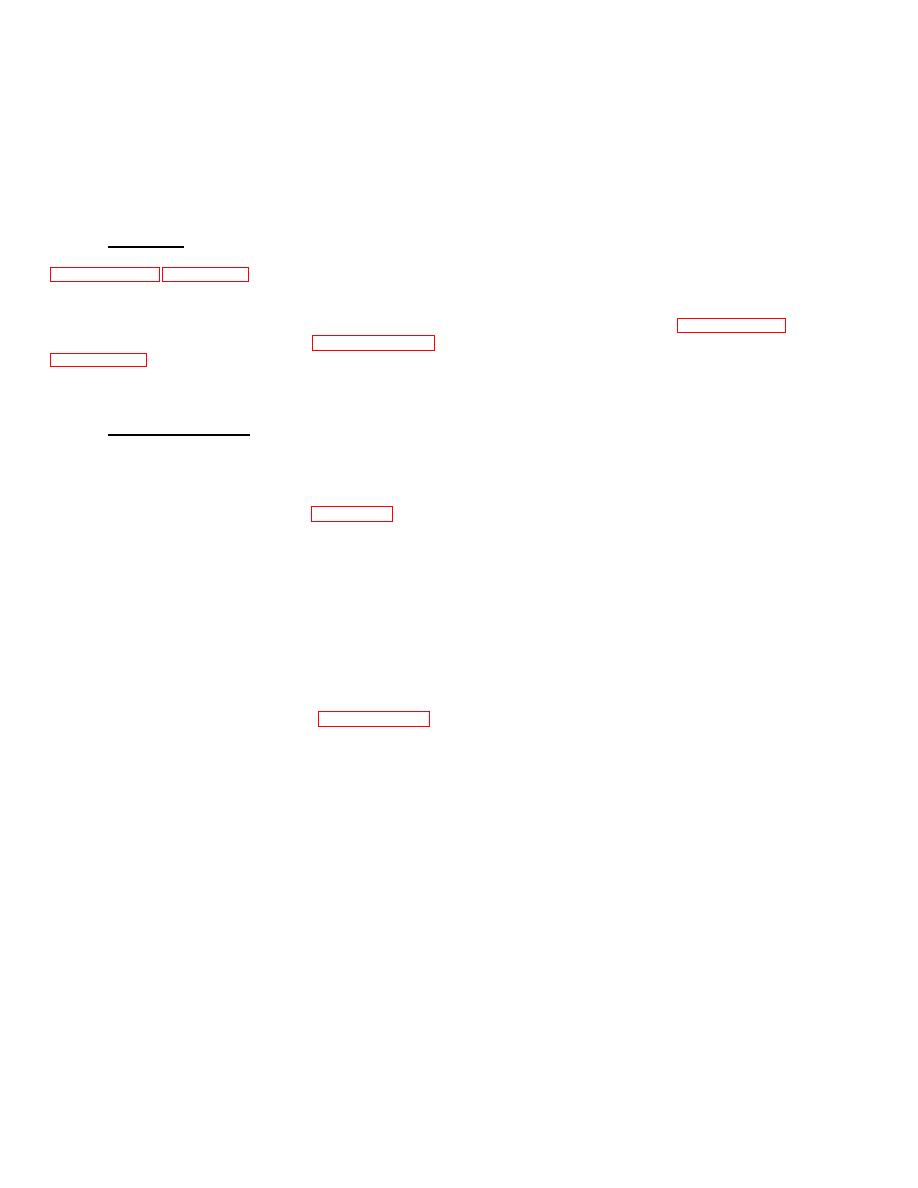 |
|||
|
|
|||
|
Page Title:
SECTION I MESSAGE FORMAT AND BASIC EQUIPMENT CONCEPTS |
|
||
| ||||||||||
|
|
 T.O. 31W2-2GSC24-2
TM 11-5805-688-14-1
NAVELEX 0967-LP-545-3011
SECTION I
MESSAGE FORMAT AND BASIC EQUIPMENT CONCEPTS
5-5.
GENERAL.
messages. Each overhead message consists of a
framing pattern and stuffing information pertaining to one
of the multiplexer's 31 ports. A complete overhead
message format used in the transmission of digital data
message in each minor frame is designated as an
from the multiplexer in a multiplexer set to the
overhead word. The overhead message content is
demultiplexer in a far-end multiplexer set.
Basic
discussed in greater detail in paragraph 5-14.
equipment concepts are described in paragraphs 5-19
5-10
A minor frame contains 29 data words and one
unique equipment functions that are performed in the
complete 29-bit overhead word, and is the second
multiplexer set.
largest organized grouping in the output message
format. One bit of the overhead word is located in the
5-6.
MESSAGE FORMAT.
first bit position of each of the 29 data words comprising
the minor frame. Thus, it can be seen that overhead
5-7.
OVERALL MESSAGE FORMAT.
words appear in the output message format at a rate one
twenty-ninth that of data words.
5-8. Data leaving the multiplexer are arranged in a
predetermined format as shown in figure 5-1. The
5-11. Each data word contains a sampled channel
message format contains data bits sampled from the
data bit for each port being used in the multiplexer. As
multiplexer's channel data inputs interleaved with
previously noted, an overhead data bit occupies the first
overhead data bits generated within the multiplexer.
data word bit position.
The total number of bits
Overhead data are inserted for two purposes: to provide
contained in a data word is variable, depending upon the
a framing or synchronization pattern for use by the
number of multiplexer ports in use. Each multiplexer
receiving demultiplexer, and to inform the demultiplexer
configuration must use a minimum of 15 ports; therefore,
of stuffing actions taken by the multiplexer as part of its
the minimum data word length is 16 bits (overhead + 15
input rate buffering process. For purposes of enabling
channel data bits). The word length can range up to 32
proper demultiplexer operation in a high bit error
bits (overhead + 31 channel data bits when all 31 ports
environment, data bits comprising a complete overhead
are in use.
message are evenly inserted over the span of numerous
channel data messages, as described in paragraph 5-14.
5-12.
In summary, a major frame is comprised of 31
minor frames, with each minor frame containing one
5-9. The largest organized grouping in the output
overhead word. Each 29-bit overhead word consists of a
message format is the major frame. The significance of
demultiplexer framing pattern and stuffing information
this grouping is that in addition to sampled channel data,
pertaining to one of the multiplexer's 31 ports. One
it contains 31 complete overhead
overhead bit is located in the first bit position of the 29
data words comprising the minor frame. Remaining data
word bit positions, varying in number between 15 and 31,
contain a sampled channel data bit for each multiplexer
port in use.
5-2
|
|
Privacy Statement - Press Release - Copyright Information. - Contact Us |